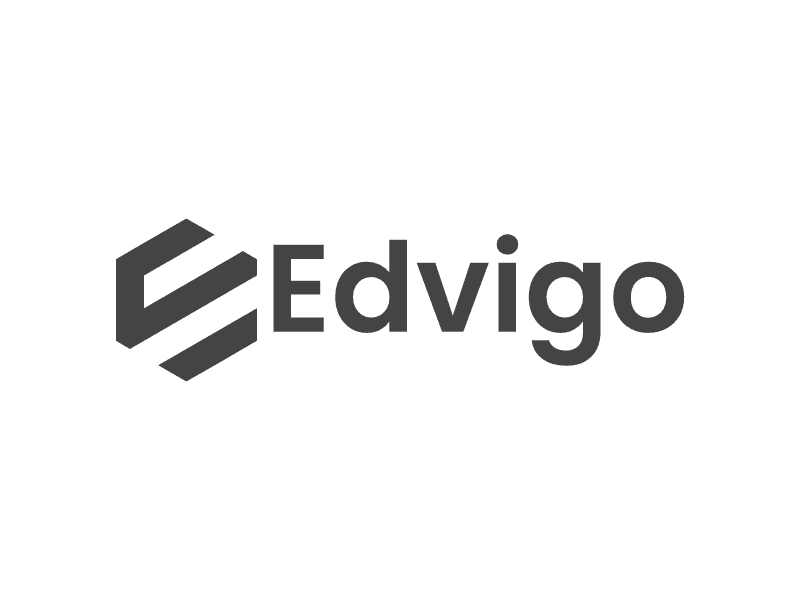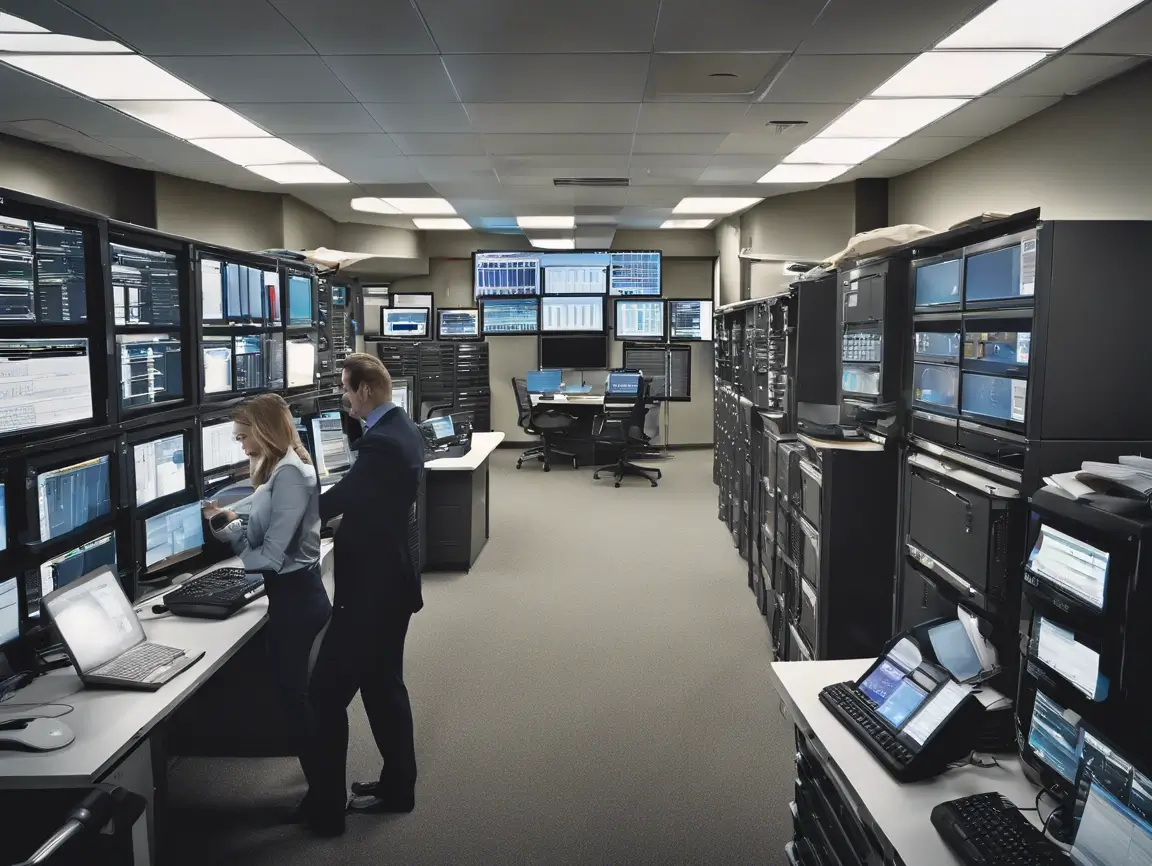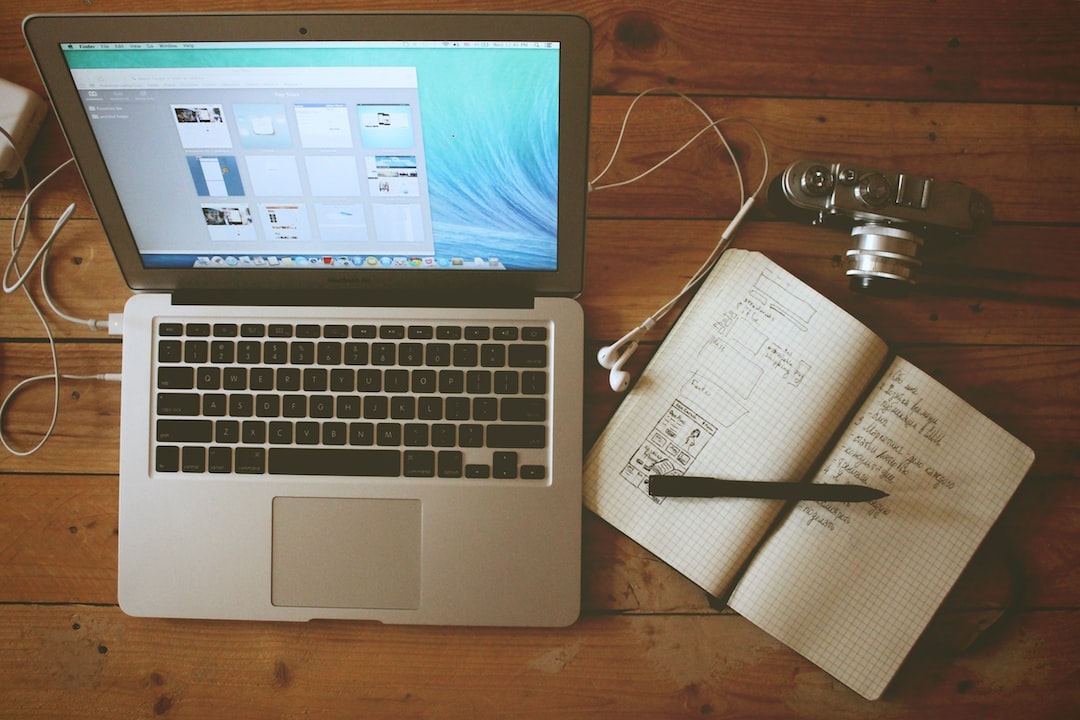Alright, let’s get real for a sec. We’re living in a time where swiping, scrolling, and double-tapping are almost as natural as breathing. Phones are basically extensions of our hands, and the phrase "I’m going offline" sounds like a kind of rebellion. But there’s this wild paradox we gotta confront: the more connected we are, the lonelier we sometimes feel. And it’s doing some weird things to our mental health too. So, the real question is – is all this tech making us better people, or is it messing with our minds?
Tech-Savvy and Low-Key Stressed: The Duality We Live
Our generation was basically born with Wi-Fi. From playing Snake on that old Nokia to streaming entire seasons on Netflix, tech has been there every step of the way. (Remember the struggle of waiting for a YouTube video to buffer? A real tragedy.) Technology has shaped the way we socialize, learn, and even how we see the world. But seriously, are we really taking into consideration how this all impacts our sanity? Let’s break that down.
Yeah, tech keeps us informed AF and connected 24/7. But there’s a catch. Being on 100% of the time doesn’t give our brains a break. Constant notifications demand instant replies, pressures pile up, and before you know it, your mind’s a chaotic mess. We’re talking about FOMO, toxic comparisons on social media, and the feeling that we’re always behind on something. The truth? Our relationship with technology needs a deep convo, and it better be real – because the stakes are high.
Digital Dopamine: The Addictive Side of Tech
Alright, let’s dive into where it all starts: dopamine. Ever heard of the "happy hormone"? That’s dopamine. It’s what gives us that little rush when someone likes our post or when we stumble upon a funny meme. Back in the day, we got our dopamine kicks from things like eating our fave snacks or listening to a fresh banger. Now? We’re getting most of it from our screens.
A Harvard study even pointed out that receiving a notification feels almost as good as getting a paycheck. That’s right – a simple "ding" can trigger the same pleasure centers in your brain that would usually light up when we get lit bonuses in life. Needless to say, tech can be a double-edged sword here. Scrolling gets addictive. You end up spending hours on TikTok without realizing it, chasing that next hit of dopamine. Next thing you know, it’s 3 AM, you’ve dug deep into conspiracy theories involving celebrity clones, and you’ve forgotten why you even opened the app in the first place.
When Virtual Reality Starts to Shape Reality
Let’s not even get into VR or AR gaming. Yet, we should. The line between the digital and the real world is getting blurrier. Before, games were pixels on a screen. Now, it feels like we’re walking right into them. VR and AR create this immersive experience where suddenly, the boundaries disappear. You’re not just a player; you’re IN the game. While that’s trippy and kind of awesome, it’s also low-key problematic.
Thing is, when you start immersing yourself way too much in these virtual worlds, you might start feeling detached IRL (in real life, for the uninitiated). It can get confusing, making you wonder which is more “real” – the experiences you have in these virtual moments or the ones outside. Don’t sleep on this – addiction to VR tech is on the rise. Some of us prefer our virtual realities more than waking up and facing our bills. (We’re looking at you, those who choose to live life as a Skyrim character over adulting.) Literal escapism, man.
Social Media Shoot-Out: Friends or Foes?
Social media: It’s like inviting the whole world into your home. Except, some guests are sweet, others are straight-up energy vampires. The balance here is tricky. On one hand, it’s dope to see what everyone’s up to, connect with people from across the globe, and have a platform for your voice. On the other hand – and this is a BIG "other hand" – it hits different when it starts affecting who you think you should be.
Comparison, they say, is the thief of joy. That’s especially true on social media. Ever stalk someone with a perfect feed and wonder what’s wrong with your life? Yeah, we’ve all been there. Feelings of inadequacy get amplified when you’re bombarded by ‘highlight reels’ from everyone else’s life. And don’t even get me started on the hate comments, cancel culture, and cyberbullying.
Let’s get real, too – social media clout isn’t everything. Chasing likes, shares, and followers can start feeling like a full-time job. But the currency of approval is super unstable. One day everyone’s hyped on your post; the next, you get ghosted and left on delivered. If not managed, this dance for validation can mess up our heads big time.
Screen Time Shenanigans: How Much Is Too Much?
It’s drag o’clock when your phone casually reminds you of your screen time for the week. You’re either proud of your “low” hours (thanks to that meditation app you just downloaded, LOL) or stunned at how many hours you’ve racked up like a boss-level gamer. But have you ever considered the true cost?
Most of us don’t get enough face-to-face time in an era where virtual hangouts are the norm. Excessive screen time might lead to digital burnout, messing with your sleep, productivity, and even your personal relationships. Ever stayed up till 4 AM just watching TikToks with bloodshot eyes? You’re not alone. Now, imagine doing that every night – not so lit anymore.
Beyond fatigue, studies show that excessive screen time can tank your attention span. Don’t even start with our reading habits (book-who?). We’re becoming a generation that thrives on memes and short, punchy TikToks – anything longer requires God-level focus. We’re constantly multitasking with multiple screens, tabs, and devices. But ironically, this tires our brain and makes us less productive. The result? A frenzied, distracted generation that finds it hard to stay grounded. So, what’s the sweet spot? Does it even exist?
Cyber Relationships: Are We Really Connecting?
Let’s talk about relationships, both romantic and otherwise. Thanks to tech, dating has changed massively. Apps like Tinder, Bumble, and Hinge turn the search for love into a swipe fest. No chemistry? Swipe left. Insta-crush? Slide into their DMs. But here’s the thing, when it’s this easy, do we value connections less?
Some of us have probably experienced moments where someone ghosted us for no apparent reason. Or maybe we’ve done the same. The convenience is lit, no one’s judging. But how deep and meaningful can a relationship be when a screen divides us? Even friendships aren’t immune – instead of catching up IRL, many opt for quick snaps or WhatsApp messages. It’s convenient, sure, but sometimes you can crave that old school – face-to-face convo (you know, with eye contact and all).
Plus, communication over text lacks texture. You can’t always discern tone, emotions, or intent from text messages. Emojis to the rescue, right? But LOLs and smiley faces don’t always capture the vibe. Misinterpretations happen, and sometimes it leads to unnecessary drama. Screen-time relationships may feel manageable, but they can fall apart sooner than analog connections. Quality over quantity, remember that.
The Downtime Dilemma: Can We Even Unplug Anymore?
In a world where everything is digitized, downtime has become a luxury. Unwinding used to mean reading a book, going for a walk, or simply lying down and staring at the ceiling (a whole mood). But nowadays, our brains are constantly jacked into the web of information. Notifications never take a holiday, so neither do we. It’s the ultimate paradox – we’re busier than ever yet accomplishing less.
Constant connectivity can chip away at our mental peace. Every moment that could be spent chilling out is often hijacked by alert pings. Something as simple as reading an article online (hint: maybe this one?) might involve a half-dozen interruptions from messages, notifications, or random app requests. It’s no wonder our ability to chill is getting curtailed.
But do we even want downtime nowadays? It’s like everyone’s scared of FOMO or being labeled as lazy. In fact, most of us associate not being busy with failure. Hustle culture + tech = burnout central. That self-inflicted need to stay connected and relevant drains our mental batteries, leaving us feeling exhausted and unfulfilled. We need to start appreciating something truly rad – stillness.
Privacy, Who? The Anxiety of Always Being Seen
The digital realm never forgets. Before, if you said something embarrassing, it would disappear into the ether. Now? It’s on someone’s IG story or Twitter timeline within minutes. The rise of tech has thrown privacy out the window. And not in a cool, artsy, carefree way either. It’s like everything we do ends up logged somewhere, and that creates major anxiety.
No one’s saying you need to become a hermit, but the pressure of being watched can make us act out of character. Certain platforms subtly encourage us to curate an idealized version of who we are. We’ve all been on dates or at parties where people were more concerned about getting that Gram-worthy shot rather than simply enjoying the moment. Living authentically feels like a challenge for many. The urge to perform for an invisible audience is mentally taxing.
Even worse is the impending danger of oversharing. Posting your every move, meal, or random thoughts might seem chill, but not everyone out there has pure intentions. From data breaches to stalking, the images we create online could someday get used against us – a harsh but necessary reality check. The constant oversight may even inhibit our personal growth. It’s hard to experiment or reinvent yourself when you’re constantly being monitored.
Tech-Enhanced Learning, But At What Cost?
Let’s shift gears and talk about education. We’re the most educated generation ever – thanks in no small part to technology. Whether you’ve taken an online course, accidentally hit “continue watching” during a TED talk binge, or even learned a few chords off YouTube – tech has opened doors in ways textbooks never could. But of course, there’s a catch.
Online learning demands discipline that many of us struggle with. (Shoutout to the procrastinators!) We’re constantly delaying assignments in favor of more fun distractions like games or shows streaming in another tab. And don’t even start on hybrid classes that end up being more Netflix than net-benefit. The divide between real and virtual classrooms has had some serious cognitive effects. Productivity tanks when our environment is loaded with digital distractions.
Let’s not forget the heavy toll on our mental health. Flexibility in learning is great, no doubt, but it’s also challenging when there’s no separation between school/work and leisure spaces. The pressure to overachieve increases because everything is within reach at all times – you’re supposed to be able to do everything and then some. Not to mention, reduced social interaction fuels loneliness and isolation, amplifying mental health woes.
Tech Traps: The Mental Health Pitfalls We Better Dodge
So we’ve talked about the toxic side of tech, but let’s get specific about its impact on mental health. For many, anxiety, depression, and elevated stress levels are our daily luggage, and technology often doubles down on that. Algorithms are smart – they feed us what they believe we want to see, which can spiral us into echo chambers of negativity. If you’re feeling down and consuming content that reflects that, it magnifies rather than mitigates the problem.
Additionally, the endless amount of available information can breed a sense of fear. Ever searched something light only to fall into a rabbit hole filled with catastrophic news, conspiracy theories, or “perfect lives” portrayed on social media platforms? Yeah, that’s called ‘doomscrolling.’ During moments of boredom or anxiety, we might whip out devices intending to distract ourselves, only to end up feeling worse, more anxious, and less in control.
The pandemic highlighted the role of technology—not always in a positive light. Isolation, limited physical interaction, and an over-reliance on digital communication bloated social anxiety. When real-life social scenarios started making a comeback, many of us had almost forgotten how to "people" IRL. The level of social anxiety spiked as a direct consequence of sheltering behind our screens. Overreliance on apps and platforms has been shown to weaken our emotional resilience, diminishing our ability to cope with real-life stressors. The cycle is vicious. Let’s face it, tech can sometimes feel like your bestie but drag you down faster than a chain in quicksand if you’re not conscious.
The Silver Lining: Tech for Mental Health Support 🌈
But hey, not all tech is evil. Therapists are only human too. As much as we rant about the negatives, remember that technology can be a tool for good when used right. The advent of teletherapy has made mental health support more accessible to us all. Whether it’s through apps like BetterHelp or virtual consultations with certified therapists, getting help is just a click away.
Mental health apps are another big win. Apps like Headspace, Calm, or MindShift literally bring relaxation techniques to your fingertips. Guided meditations, breathing exercises, and even simple journaling techniques can make a world of difference in managing anxiety and improving your overall well-being. They can help you build self-awareness, develop coping mechanisms, and quit negative thinking patterns—making tech your low-key therapist rather than your enemy.
Additionally, social media, when used mindfully, can foster communities that offer peer support. Various organizations are using Instagram, Reddit, or even YouTube to target mental health stigma and provide an open space for discussions. You’re not alone; there’s always someone out there who can relate. Use this to your advantage – find your tribe, share your experiences, and be a part of a positive shift online. The irony is that the same platforms that might harm us can also heal us when we change the way we engage with them.
Navigating the Tech Minefield: Tips for a Balanced Life 🎯
So how do we walk the fine line between benefiting from tech and sinking into its pitfalls? The answer’s simple – find your balance. Start by setting boundaries on your screen usage. Most smartphones now come with intuitive features such as screen time trackers, app timers, and even "do not disturb" modes that kick in during set hours. Leverage these tools not to just "limit" yourself but to create room for the non-digital activities that genuinely fill your cup.
Unfollow accounts that make you feel like trash, and delete apps that don’t add value to your life. Instead, follow positivity, humor, creatives that inspire you, and pages that care about your mental health and are transparent about normal lives—not the highlights alone. Normalize taking digital detoxes. Go offline for a weekend or even just a day, and notice how refreshed you feel after. Engage in non-digital hobbies. Whether it’s skating, drawing, hiking, or reading a physical, old-school book – rediscover passions disconnected from Wi-Fi.
Be intentional about your social interactions. You don’t have to reply to every DM instantly; it’s okay to not check every notification as it comes in. Practice some digital feng shui by structuring your devices and apps in ways that minimize distraction and promote peace. Casual, quiet stretches of time—without our screens—can do wonders for mental health. A tech-cleanse can work wonders for body and soul.
Tech for Change: Positively Shifting Digital Landscapes 🌍
As a Gen Z-er, you’re not just a consumer; you’re a creator. Use this to shape how tech evolves. Start conversations about mental health, demand more integration of well-being features from app designers, and use your own platforms to create awareness. Imagine a digital world where self-care is the norm, not the exception.
Consider working alongside organizations that are pioneering healthier online spaces or who work to battle the negatives of our tech obsession. Develop apps, blogs, or even social media campaigns that highlight the importance of mental health. Use fintech, edtech, healthtech, or any other niche to integrate more wellness-oriented metrics into how we “rank” success—think beyond likes and followers. Advocate for more responsibly-designed digital platforms. Let’s make a concerted effort to update social norms for screen use that are positive and empathetic.
Recognize Your Triggers: How to Tune Out the Noise
Most of us aren’t even aware of the subtle ways tech influences our mental health. That’s why self-awareness is so crucial. Pay attention to your emotions, your frustrations, and your stress levels as you use different forms of tech. Do certain apps make you feel anxious? Are there platforms that wind you up just by their very existence? Recognize these triggers and address them head-on.
This isn’t just about uninstalling apps or going on brief digital detoxes. Understanding the ‘why’ behind your reactions is equally important. Therapy or self-reflective exercises like journaling can help you get to the root of the problem. When it comes down to it, knowing your triggers empowers you to make better choices about how, when, and why you engage with technology.
If certain conversations, accounts, or even work traditions become too overwhelming, maybe it’s time to mute, block, or reevaluate your interaction habits. If you’re constantly feeling screen fatigue, it’s time to reconsider which apps and tools are truly worth your energy. Triggers don’t always need to be eliminated; they sometimes need to be managed for healthier use patterns. Balance is key.
The Digital Age: A Work in Progress
Let’s be real. The digital age is here to stay, and so will all its quirks – the good, the bad, and the “I didn’t sign up for this.” What matters, however, is how we navigate it. We’ve discussed the chaos and the perks technology brings to our mental health, but now it’s our mission to pinpoint what elements really contribute to higher well-being and what doesn’t. This isn’t a set-it-and-forget-it kind of deal; it involves constant tweaks. Stay proactive and vigilant.
As technology continues to evolve, understand that our relationship with it will keep changing too. Watch for new developments, updates, and shifts in the way tech integrates with our daily lives. Be open to change, but always anchor yourself in practices that safeguard your mental well-being.
Where We’re Headed: The Future of Tech and Mental Health 🚀
The intersection of tech and mental health is just beginning to gain traction. As we move forward, it’s likely we’ll see more tailored solutions at this crossroads. Imagine personalized mental wellness plans or apps that anticipate your emotional states before you’re even aware of them. AI-driven wellness tools that can read your mood, suggest mental exercises, or even remind you to log off and go outside are not far-fetched. They’re already being prototyped.
Sure, the idea of machines understanding our emotions can seem a bit "Black Mirror," but it might also save lives. With the right ethical checks, AI and technology can shift into becoming essential support tools in the fight against mental illnesses. This future won’t build itself though – it requires the collective effort and awareness of all of us to ensure that we harness tech for the greater good.
FAQ
How can I limit my screen time without FOMO?
Totally valid question. Start by setting designated "off-grid" times where you focus on other passions or just chilling out. Shift your perspective – for example, turning off notifications can enhance your experiences, making them more mindful and intentional. Zone in on quality over quantity when it comes to screen time.
Can social media actually be beneficial for mental health, or only harmful?
Surprisingly, yes! Social media can be empowering if used mindfully. It’s all about curation—follow accounts that inspire you and share positive vibes. Engage in communities that support mental well-being and use the platform to create meaningful connections rather than mindlessly scrolling.
I feel addicted to my phone, how do I slowly break the habit?
Admitting it is already the first step. Try app timers to reduce usage gradually. Set specific times for a tech detox each day, baby steps style. Replace tech time with something fulfilling like reading or working out. The key is to replace, not just to remove.
How do I handle negative or hateful comments online without spiraling?
It’s easier said than done, but disconnecting for a breather is crucial. Mute, block, or report toxic accounts and lean on real-life or online communities that encourage positivity. Remember that not every comment or retweet deserves a response. Choose your battles wisely and don’t take internet trolls personally; they’re not worth your mental peace.
What apps can help me manage my mental health?
There are plenty on the table, but popular ones like Headspace, Calm, and MindShift come highly recommended. Each has its own strengths, from guided meditations to helpful coping mechanisms for anxiety. Experiment with them to find what clicks best with you.
Is VR and AR gaming safe for my mental health?
While they offer insane immersive experiences, moderation is critical. Extended use can make you detest RL (real life) and prefer the escape, which messes with your mental balance. If you do indulge, try setting time limits and ensure you’re staying connected with real-world experiences too.
Sources and References:
- American Psychological Association. (2021). The impact of technology on adolescents.
- Harvard Business Review. (2020). Why dopamine is important and how technology affects it.
- Journal of Cyberpsychology, Behavior, and Social Networking. (2020). VR and AR Gaming.
- World Health Organization. (2021). Guidelines on screen time and mental health.
Peace out and mind your tech!




